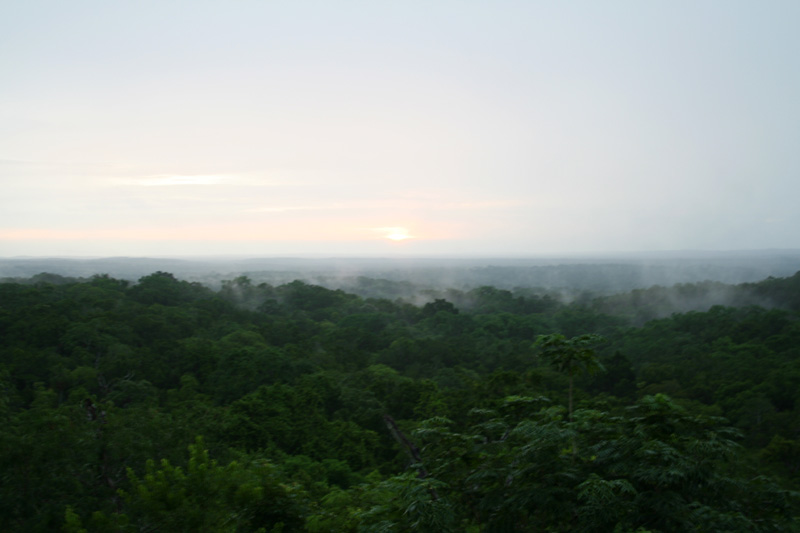
Tikal (4) |
 |
|---|
Source: WTL© digital photograph taken at sunrise from atop Tikal's Pyramid #4 looking east. Comments: This photo is placed here early in the presentation of Tikal to evoke the mythico-religious ethos of Tikal's time and place. One guidebook says this: "It's wise to arrive early at Tikal when the air is fresh and heat less intense, but note that it's rare to witness an impressive sunrise over the ruins as the appearance of the sun is generally delayed by mist rising from the humid forest" (Rough Guide, p. 345). The "meaning" of "tikal": Among several interpretations of the word tikal are these two: (A) In Yucatecan Maya ti means 'place', and k'al means 'spirits'; hence, Tikal = "place of spirits." (B) Also in Yucatecan Maya k'al means 'count of twenty'; and, since twenty years in Maya is k'atun, therefore, Tikal = "place of the count of a k'atun (i.e., unit of twenty years). The accords with the glyph for Tikal, which is a mutul, that is, a tied knot of hair or a tied bundle as in a tied bundle of years. Tikal, then, might allude to the sacred place where the Maya time count was sanctified and maintained. Notions for HUM 2461: (1) the creation myths and stories in the Popol Vuh; (2) Latin American humanities arising from and being shaped by the earth (lo ctónico); (3) the precontact peoples' east-west orientation with the sun (i.e., the sun god) rising in the east as the beginning of a cyclical struggle between good (life) and evil (death); and (4) the simple beauty of rainforest nature. Note: the noise from the forest's animals at the foot of this pyramid was almost deafening. In other words, a faunal symphony accompanies this photo. |
|---|
 |